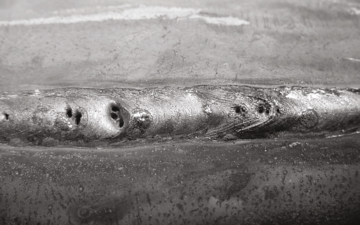What is Porosity in Welding: Typical Sources and Efficient Remedies
What is Porosity in Welding: Typical Sources and Efficient Remedies
Blog Article
The Scientific Research Behind Porosity: A Comprehensive Overview for Welders and Fabricators
Understanding the intricate mechanisms behind porosity in welding is essential for welders and fabricators making every effort for impeccable craftsmanship. As metalworkers delve right into the midsts of this sensation, they discover a globe governed by numerous variables that affect the development of these small gaps within welds. From the make-up of the base products to the ins and outs of the welding process itself, a wide range of variables conspire to either intensify or reduce the presence of porosity. In this comprehensive overview, we will certainly unwind the science behind porosity, exploring its results on weld top quality and introduction advanced techniques for its control. Join us on this trip with the microcosm of welding flaws, where precision satisfies understanding in the quest of flawless welds.
Understanding Porosity in Welding
FIRST SENTENCE:
Evaluation of porosity in welding reveals essential understandings right into the integrity and quality of the weld joint. Porosity, identified by the presence of tooth cavities or gaps within the weld metal, is a typical concern in welding procedures. These gaps, if not appropriately addressed, can endanger the structural stability and mechanical residential or commercial properties of the weld, bring about potential failures in the completed item.

To detect and measure porosity, non-destructive screening techniques such as ultrasonic screening or X-ray inspection are usually employed. These methods enable for the recognition of internal issues without compromising the stability of the weld. By examining the size, form, and distribution of porosity within a weld, welders can make informed choices to enhance their welding processes and achieve sounder weld joints.

Aspects Affecting Porosity Development
The incident of porosity in welding is influenced by a myriad of variables, ranging from gas protecting efficiency to the ins and outs of welding parameter setups. Welding parameters, consisting of voltage, current, travel speed, and electrode type, also impact porosity development. The welding method used, such as gas steel arc welding (GMAW) or shielded metal arc welding (SMAW), can influence porosity development due to variations in warm circulation and gas protection - What is Porosity.
Impacts of Porosity on Weld Top Quality
Porosity development dramatically jeopardizes the structural stability and mechanical residential properties of welded joints. When porosity exists in a weld, it creates spaces or tooth cavities within the material, decreasing the total strength of the joint. These gaps function as tension concentration factors, making the weld more prone to cracking and failing under tons. The visibility of porosity likewise compromises the weld's resistance to corrosion, as the entraped air or gases within deep spaces can react with the surrounding environment, resulting in destruction gradually. Additionally, porosity can hinder the weld's capability to withstand stress or effect, more jeopardizing the total quality and dependability of the bonded framework. In important applications such as aerospace, auto, or structural buildings, where security and sturdiness are extremely important, the damaging impacts of porosity on weld top quality can have serious repercussions, emphasizing the significance of lessening porosity through appropriate welding methods and procedures.
Methods to Minimize Porosity
Furthermore, using the ideal welding specifications, such as the right voltage, current, and take a trip speed, is crucial in avoiding porosity. Preserving a constant arc size and angle throughout welding additionally aids minimize the possibility of porosity.

Additionally, selecting the best securing gas and preserving correct gas circulation prices are vital in minimizing porosity. Using the proper welding strategy, such as back-stepping or employing a weaving movement, can likewise aid distribute heat uniformly and reduce the chances of porosity formation. Lastly, making sure appropriate air flow in the welding environment to remove this contact form any kind of potential sources of contamination is essential for achieving porosity-free welds. By applying these methods, welders can effectively reduce porosity and generate top quality bonded joints.

Advanced Solutions for Porosity Control
Applying sophisticated innovations and ingenious techniques plays a crucial function in accomplishing premium control over porosity in welding processes. One sophisticated remedy is the use of advanced gas mixtures. Protecting gases like helium or a combination review of argon and hydrogen can assist minimize porosity by supplying better arc security and improved gas insurance coverage. Furthermore, using advanced welding techniques such as pulsed MIG welding or changed atmosphere welding can additionally help mitigate porosity problems.
An additional advanced option includes making use of sophisticated welding tools. For instance, making use of devices with integrated attributes like waveform control and innovative source of power can boost weld top quality and lower porosity risks. Furthermore, the application of automated welding systems with accurate control over criteria can substantially decrease porosity flaws.
Additionally, integrating advanced monitoring and evaluation modern technologies such as real-time X-ray imaging or automated ultrasonic testing can assist in finding porosity early in the welding process, permitting prompt rehabilitative actions. In general, incorporating these sophisticated solutions can substantially improve porosity control and boost the general top quality of bonded elements.
Final Thought
In final thought, recognizing the scientific research behind porosity in welding is crucial for welders and fabricators to create top quality welds - What is Porosity. Advanced solutions for porosity control can additionally enhance the welding process and make certain look these up a strong and trustworthy weld.
Report this page